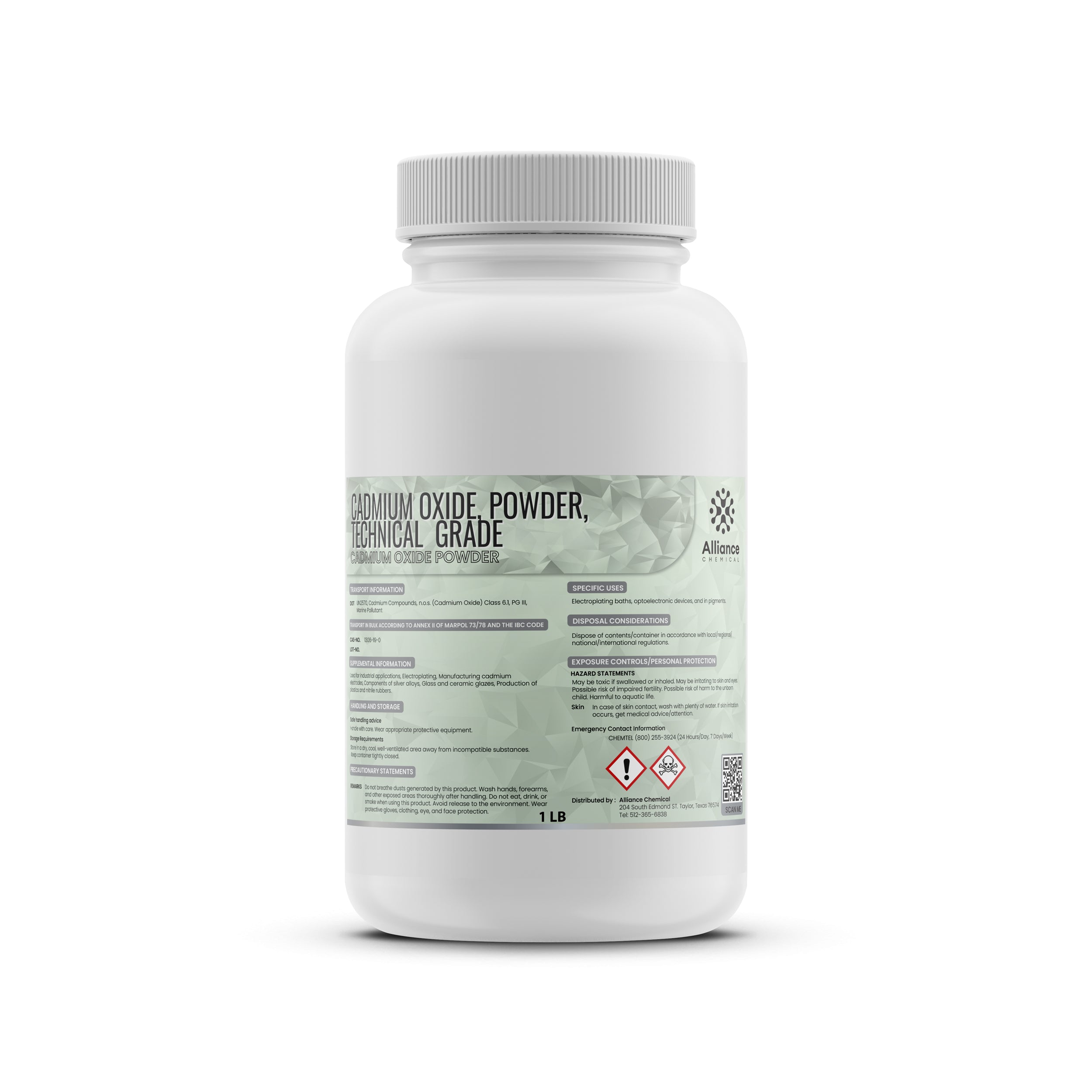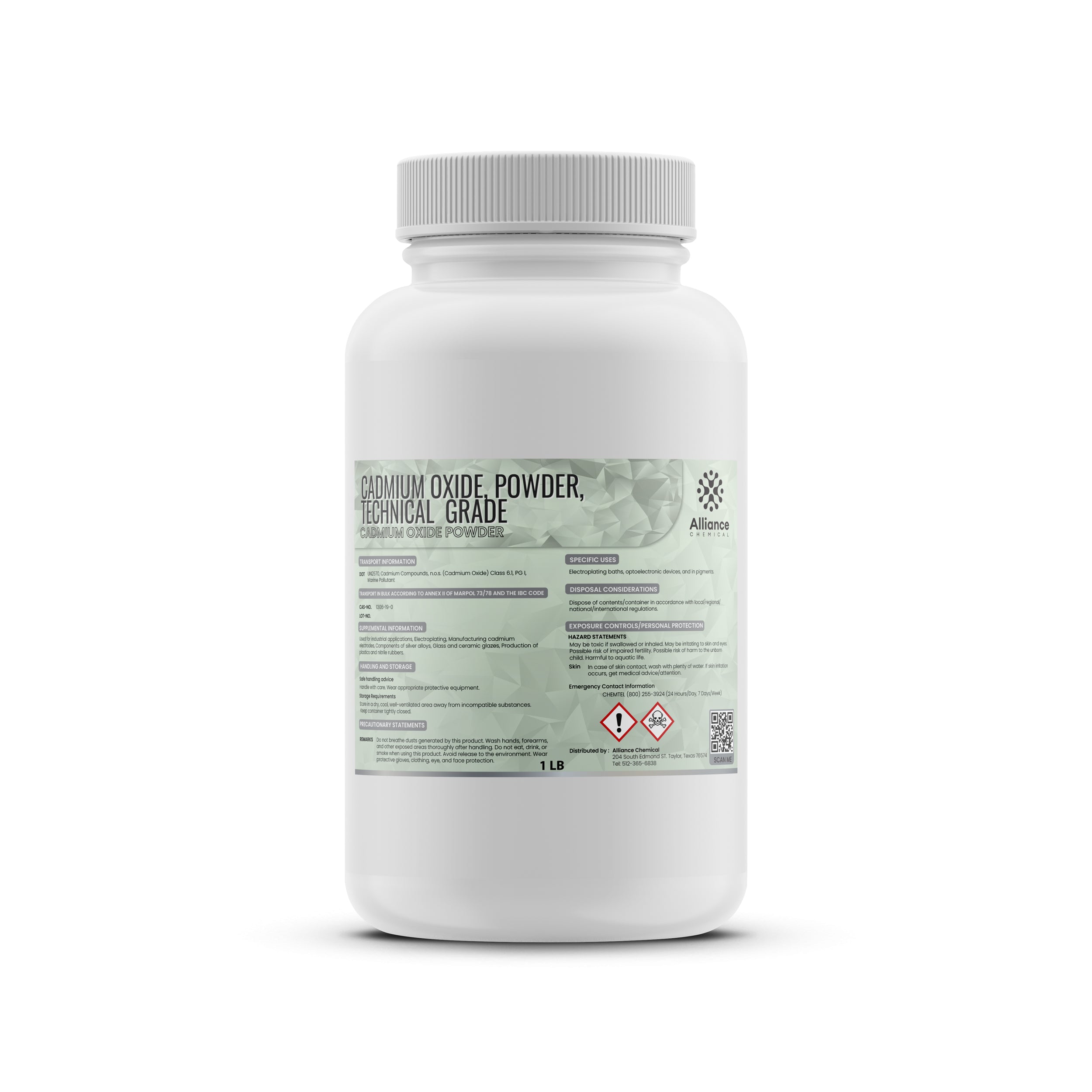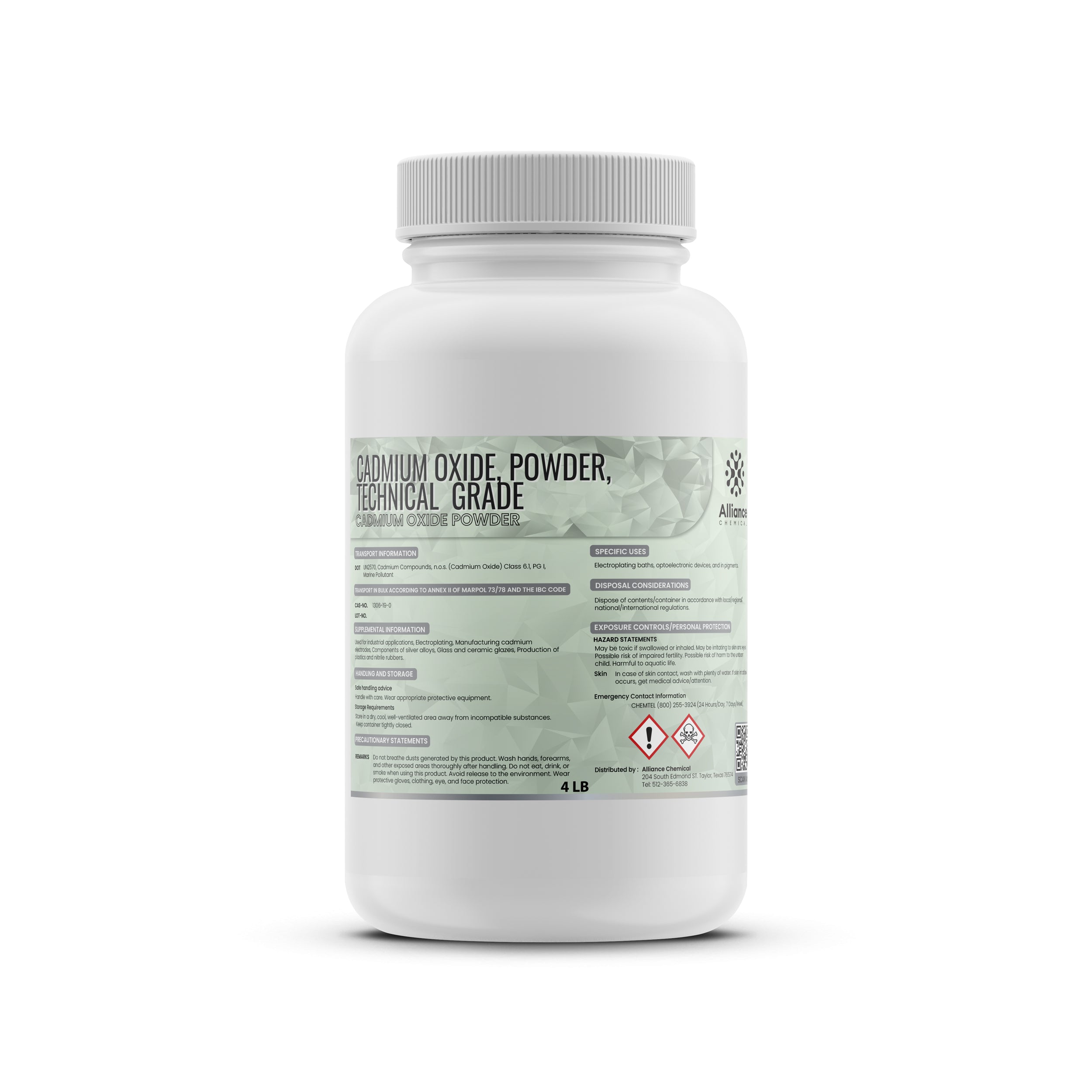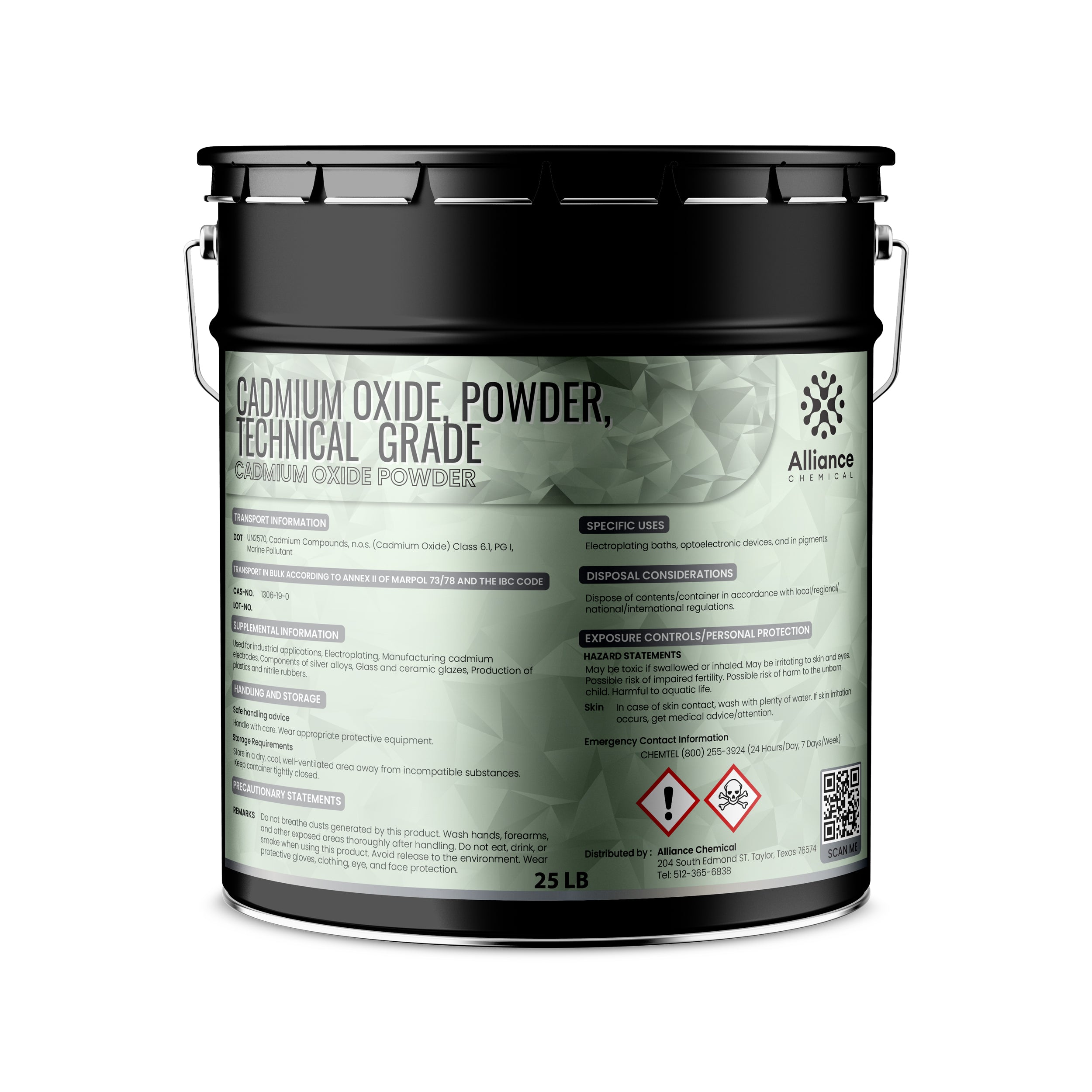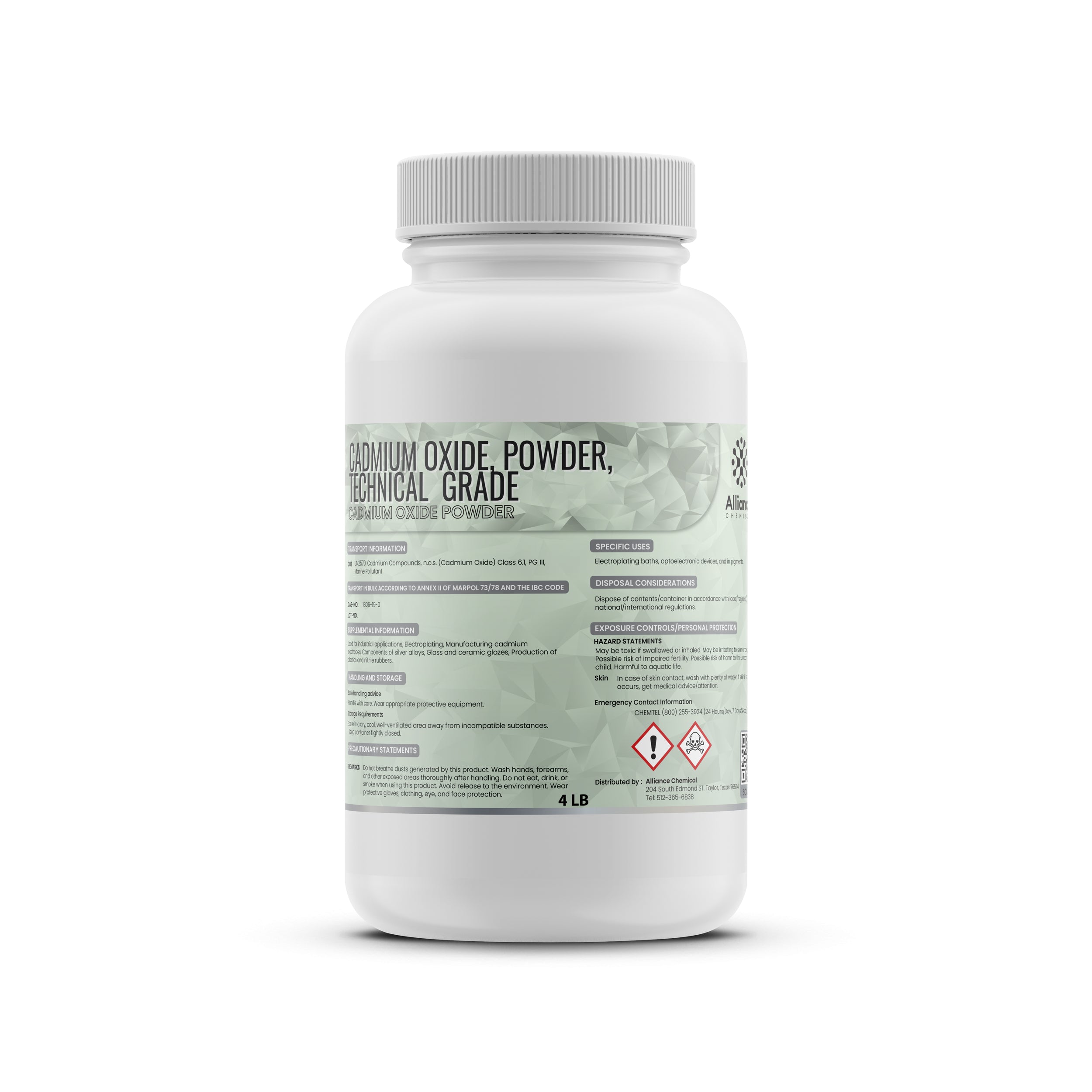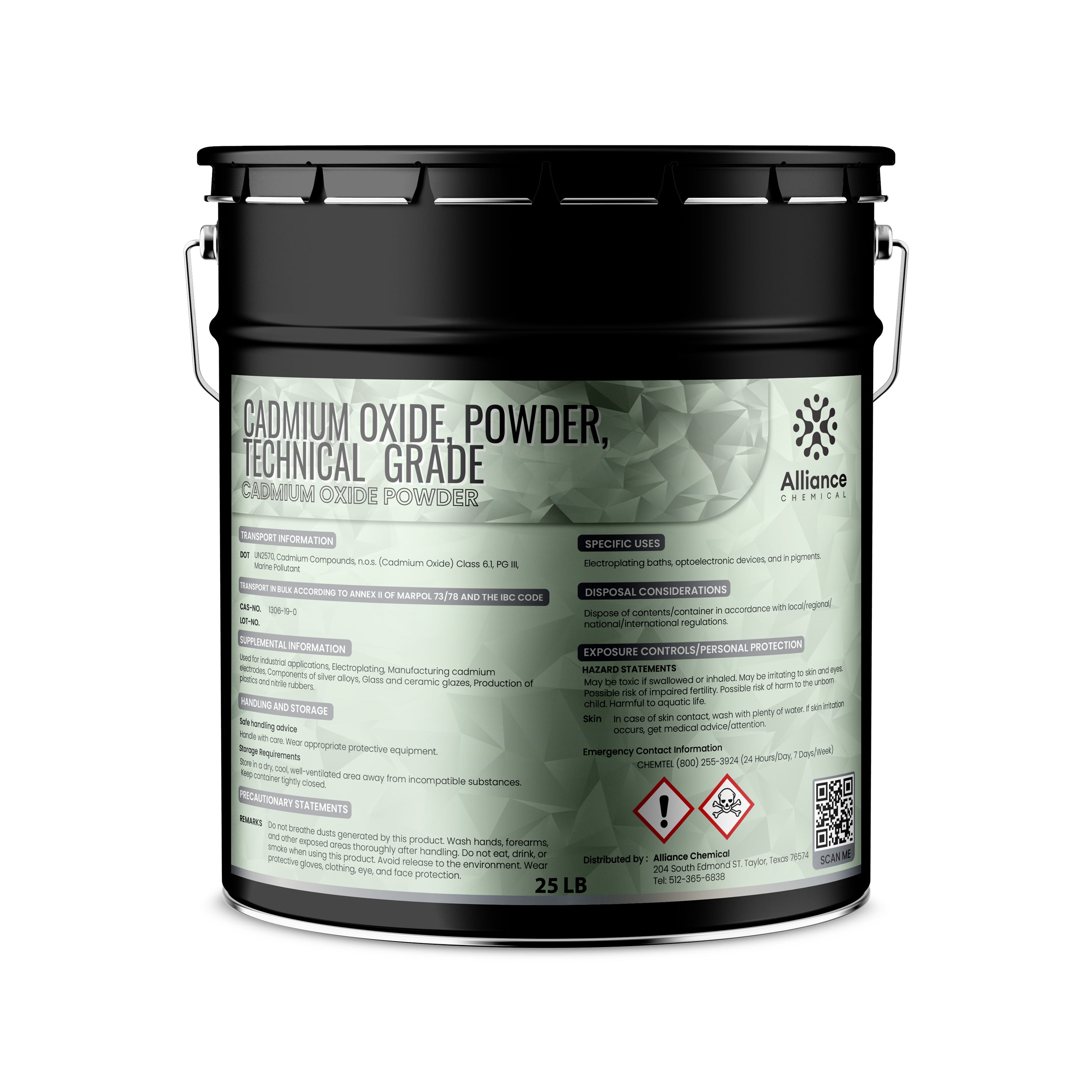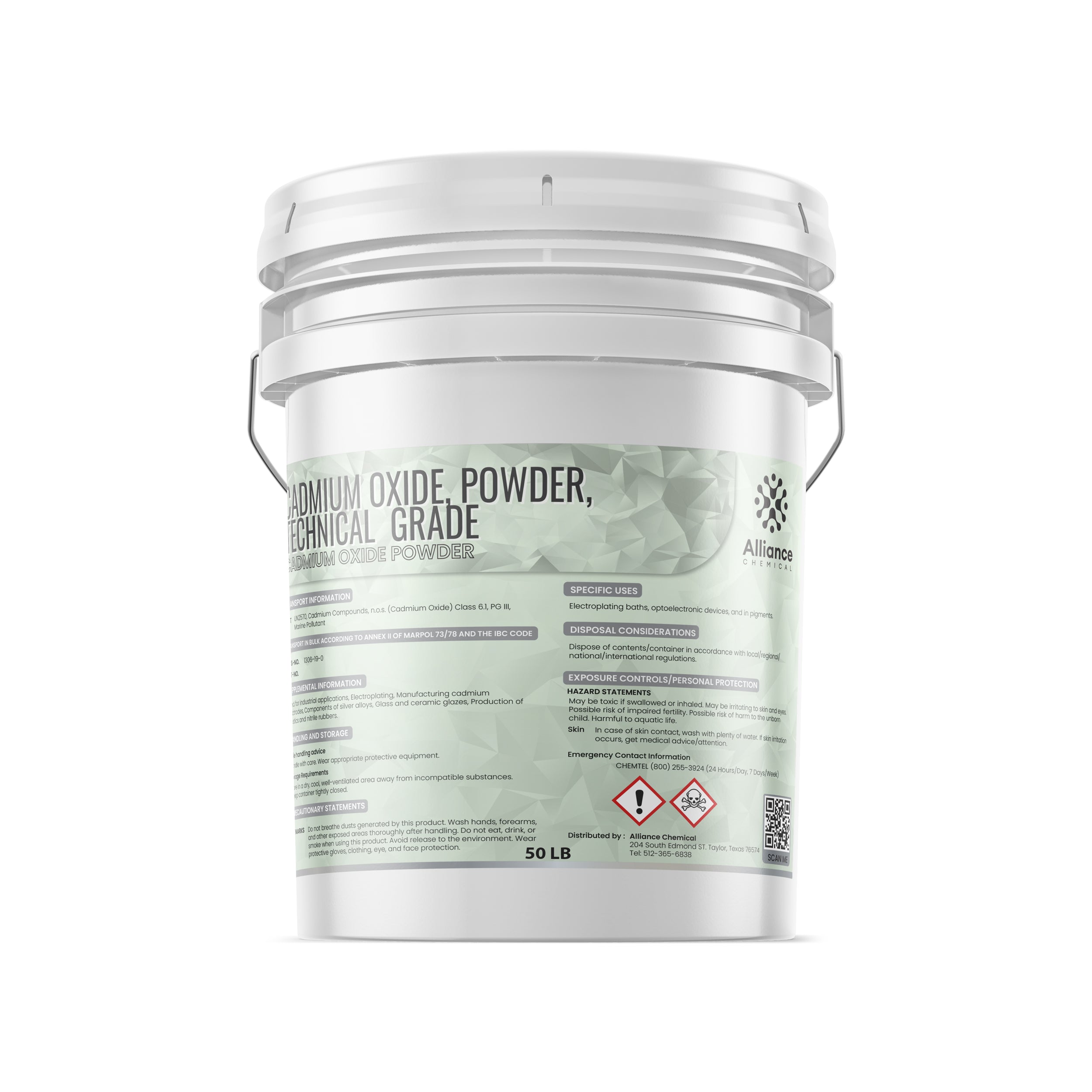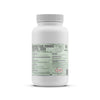Cadmium Oxide Powder Technical
Category : Inorganic Compounds
$70.00
Unit price
Quantity
Ask a question
Product Overview
Cadmium Oxide Powder Technical (Cadmium(II) oxide, CdO) is a high-purity yellow to red solid used predominantly as a pigment precursor, semiconductor material, and in specialized ceramic applications. The material exhibits excellent thermal stability and distinctive electrical properties that support reliable performance in electronic components, pigments, and coating systems. Typical assay ranges from 99.0 to 100.5 wt% CdO by ICP-OES, with trace-level impurities controlled to meet stringent industry standards. The product is supplied as a free-flowing powder with a density around 8.2 g/mL at 20°C and is insoluble in water but soluble in acids, enabling controlled processing in pigment synthesis and semiconductor fabrication. Its stability under inert or reducing conditions helps ensure consistency across production batches and long-term material integrity in finished products.
In addition to pigment and semiconductor applications, Cadmium Oxide is employed in high-energy density battery systems and as a catalyst support in chemical processes. The material’s color stability, chemical robustness, and predictable melt and sintering behavior make it suitable for ceramic glazes, glass coatings, and ceramic coloration. This technical grade Cadmium Oxide Powder is intended for industrial and institutional use, with careful handling and storage to preserve purity and performance.
Key Properties
- Appearance: Yellow to red powder
- Chemical Formula: CdO
- Molecular Weight: 192.23 g/mol
- Boiling Point: N/A
- Specific Gravity (20°C): 8.15 - 8.25 (typical 8.2)
- Solubility in Water: Insoluble in water; soluble in acids
- Residue After Ignition: Maximum 0.5% (typical 0.2%)
- Assay (CdO content): 99.0 - 100.5 wt% (typical 99.7%)
- Chloride (Cl): ≤ 20 ppm (typical 10 ppm)
- Nitrate (NO3⁻): ≤ 20 ppm (typical 5 ppm)
- Ammonium (NH4⁺): ≤ 5 ppm (typical 1 ppm)
- Sulfate (SO4²⁻): ≤ 100 ppm (typical 20 ppm)
- Arsenic (As): ≤ 0.5 ppm (typical 0.05 ppm)
- Heavy Metals (Pb total): ≤ 2 ppm (typical 0.5 ppm)
- Iron (Fe): ≤ 20 ppm (typical 5 ppm)
- Copper (Cu): ≤ 5 ppm (typical 1 ppm)
- Manganese (Mn): ≤ 10 ppm (typical 2 ppm)
- Nickel (Ni): ≤ 5 ppm (typical 1 ppm)
- Lead (Pb): ≤ 5 ppm (typical 1 ppm)
- Sodium (Na): ≤ 50 ppm (typical 10 ppm)
- Potassium (K): ≤ 100 ppm (typical 20 ppm)
- Calcium (Ca): ≤ 200 ppm (typical 50 ppm)
- Magnesium (Mg): ≤ 100 ppm (typical 20 ppm)
- Aluminum (Al): ≤ 50 ppm (typical 10 ppm)
- Molecular Weight (Cadmium Oxide): 192.23 g/mol
Common Applications
- Pigment Production: Application in ceramics and glass for vibrant color and durable performance; contributes to color stability under high temperatures.
- Semiconductor Material: Serves as a semiconductor with distinctive electrical properties for specialty electronic devices and sensors.
- Battery Manufacturing: Used in cadmium-based battery systems to provide high energy density and stable cycling.
- Catalyst in Chemical Reactions: Acts as a catalyst or catalyst support in selective reactions, supporting improved rates and selectivity.
- Glass Coating: Applied as a coating to enhance durability, hue, and optical properties of glass products.
Safety Precautions
Handle under controlled conditions with appropriate PPE (chemical-resistant gloves, splash goggles, and dust-control measures). Store in a cool, dry place away from incompatible materials in HDPE or glass containers, tightly sealed to minimize moisture ingress and contamination. Work in a well-ventilated area or fume hood to avoid inhalation of dust; utilize local exhaust ventilation and process controls during handling and transfer to limit airborne exposure. Follow storage recommendations to maintain stability and purity, and prevent exposure to light and moisture which can impact product integrity.
Benefits
✔ High Purity and Consistent Assay – ICP-OES controlled CdO content with typical 99.7% and a tight specification window for reliable pigment and semiconductor performance.
✔ Thermally Stable Material – Maintains color and electrical properties under high-temperature processing common in ceramics, glass, and electronics.
✔ Controlled Impurity Profile – Low levels of chlorides, sulfates, and heavy metals support electronics reliability and pigment clarity.
| Property | Value |
|---|---|
| Molecular Weight | 128.41 g/mol |
| Formula | CdO |
| Grade | Technical |
| Form | Solid |
| Solubility | Soluble in water |
| Appearance | Crystalline solid |
| Melting Point | 125 °C |
| Boiling Point | 240 °C |
| Specific Gravity | 1.5 |
| Industry | Industrial |
Compare Products
| Price |
|---|
| SKU |
| Rating |
| Discount |
| Vendor |
| Tags |
| Weight |
| Stock |
| Short Description |

